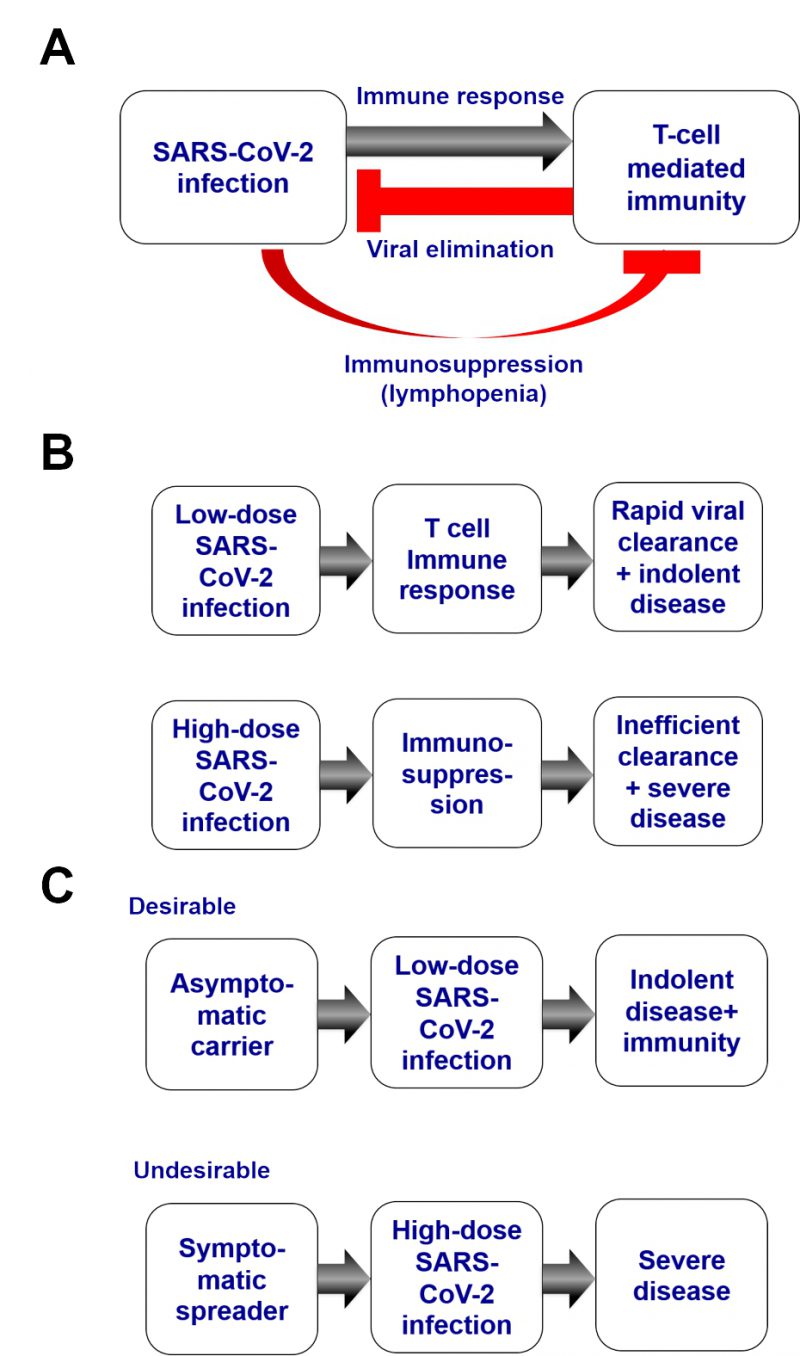Back to article: Coronavirus infections: Epidemiological, clinical and immunological features and hypotheses
FIGURE 1: Proposed relationships between COVID-19 and anti-SARS-CoV-2 immune responses.(A) The precarious equilibrium between SARS-CoV-2 and the immune system. While the virus elicits an immune response leading to elimination of infected cells (and hence clearance of the infection), it tends to suppress the immune response. Therefore, the outcome of infection is determined by the kinetics of the immune response leading to viral elimination versus viral replication leading to immunosuppression. (B) Hypothetical effect of the initial contagion on the course of the infection caused by SARS-CoV-2. A low-level contagion would favor an efficient immune response and indolent infection, leading to immunity of the infected person. Transmission of a large number of viral particles would tend to cause multifocal respiratory infection leading to immunosuppression and severe illness and possibly death. (C) Possible modes of transmission of SARS-CoV-2. Indolent carriers would tend to transmit a low viral load to their contacts, leading to indolent disease and antiviral immune responses in immunocompetent individuals. This mode of transmission might be considered as desirable because it leads to population immunity if it attains a large fraction of the population. In contrast, symptomatic carriers might transmit larger amounts of viral particles with a higher probability of leading to severe disease.

